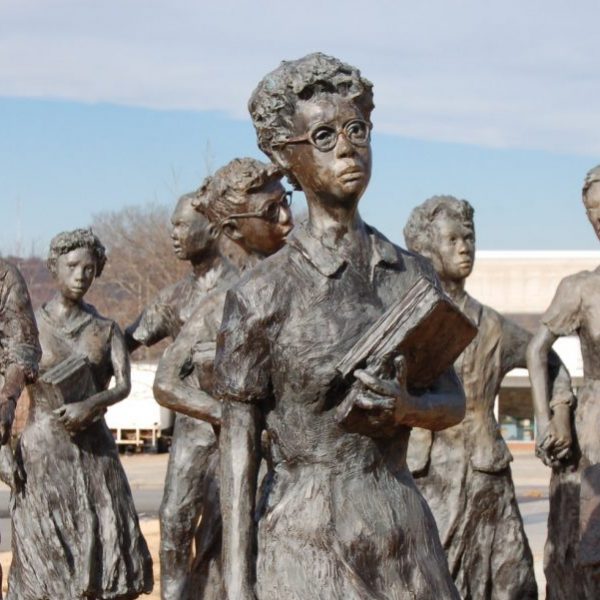A Complicated Picture: Two Women of Little Rock
Read an excerpt from Elizabeth and Hazel
There are no simple stories, if they’re true. Fifty five years ago, a young black student named Elizabeth Eckford moved toward Central High School in Little Rock, Arkansas to attend class for the first time. She was part of what would be known as the Little Rock Nine, a group of students who would desegregate the all-white school. As she walked alone, crowds gathered around her, many jeering and taunting. Hazel Bryan, another fifteen year old student, walked close behind her and, when a news photographer brought her into focus, screamed hateful epithets as he pulled the trigger. The photo would hit the newspapers the next day and remain in the public’s imagination as a symbol for discrimination in America.

David Margolick’s book, Elizabeth and Hazel, is among other things, an exploration into what happens when a person, or the news media, or a society as a whole turns another person into a symbol. In part, such reduction of individuals to a one dimensional entity is what helped Hazel shout those epithets unthinkingly when she could not see a real person in Elizabeth, her classmate.
Elizabeth and Hazel brings nuance to the picture. For her part, the teenage Elizabeth Eckford was more than an embodiment of determination set against prejudice, but a thoughtful, careful girl who cared deeply about getting a good education. Margolick‘s portrayal of Hazel reveals that motivations are often inscrutable. Instead of pure hate and malice in Hazel, we find a 15 year old girl whose self-concern, thoughtlessness and ignorance converge into a noxious act that went down in history.
As the women get in contact and the media picks up their story, the characters of both women strain against the easy classification most useful for story telling. Margolick recounts how Eckford is by nature private, reluctant and, at times, pessimistic in a way that defies the impulse to smooth over the history’s rough edges. Bryan’s effusive personality comes across as naïve, and at times critics label her an opportunist.
A more complicated picture of racism and discrimination also emerges in its hushed forms. In her family Hazel frequently confronts deep streams of prejudice that are quiet and pernicious. This type of bigotry would not make the news. In fact, even in the photograph’s recent aftermath, segregation leaders wanted to distance themselves from Hazel – calling her a “stirrer” – hoping to take a more subtle tack.
Yet as the story develops through time, forces on all sides are similarly tempted to reduce a complicated person, or relationship, into a useful trope for their own purposes. When Eckford and Bryan meet up years later for a new photograph, they appear on a poster with the word “Reconciliation.” Elizabeth would note they rushed to the word “reconciliation” when “forgiveness” was most true.
With eagerness, years later, Hazel’s contemporaries from Central high school days work to make her into an anomaly. Hazel’s coming forward in a spirit of apology seemed to implicate the rest of her class. Ralph Brodie, former class president, “set out to document how marginal Hazel had actually been…” She received the same treatment from government officials. “As the official face of bigotry, she was useful to them; her coming forward as a changed woman complicated things.”
“We tell ourselves stories in order to live,” Joan Didion famously begins in her essay “The White Album”:
“We interpret what we see, select the most workable of multiple choices. We live entirely… by the imposition of a narrative line upon disparate images, by the ‘ideas’ with which we have learned to freeze the shifting phantasmagoria which is our actual experience.”
Elizabeth and Hazel’s relationship has the uneven trajectory appropriate to the complex characters and events that brought them together. Accordingly, in many ways Margolick’s book is the story about the attempt to make a story out of these two women.
Find questions for group discussion on Elizabeth and Hazel here; the book is a new and notable title in Freshman Reads, which offers critical, stimulating reading for incoming freshmen or for other summer reading programs.




